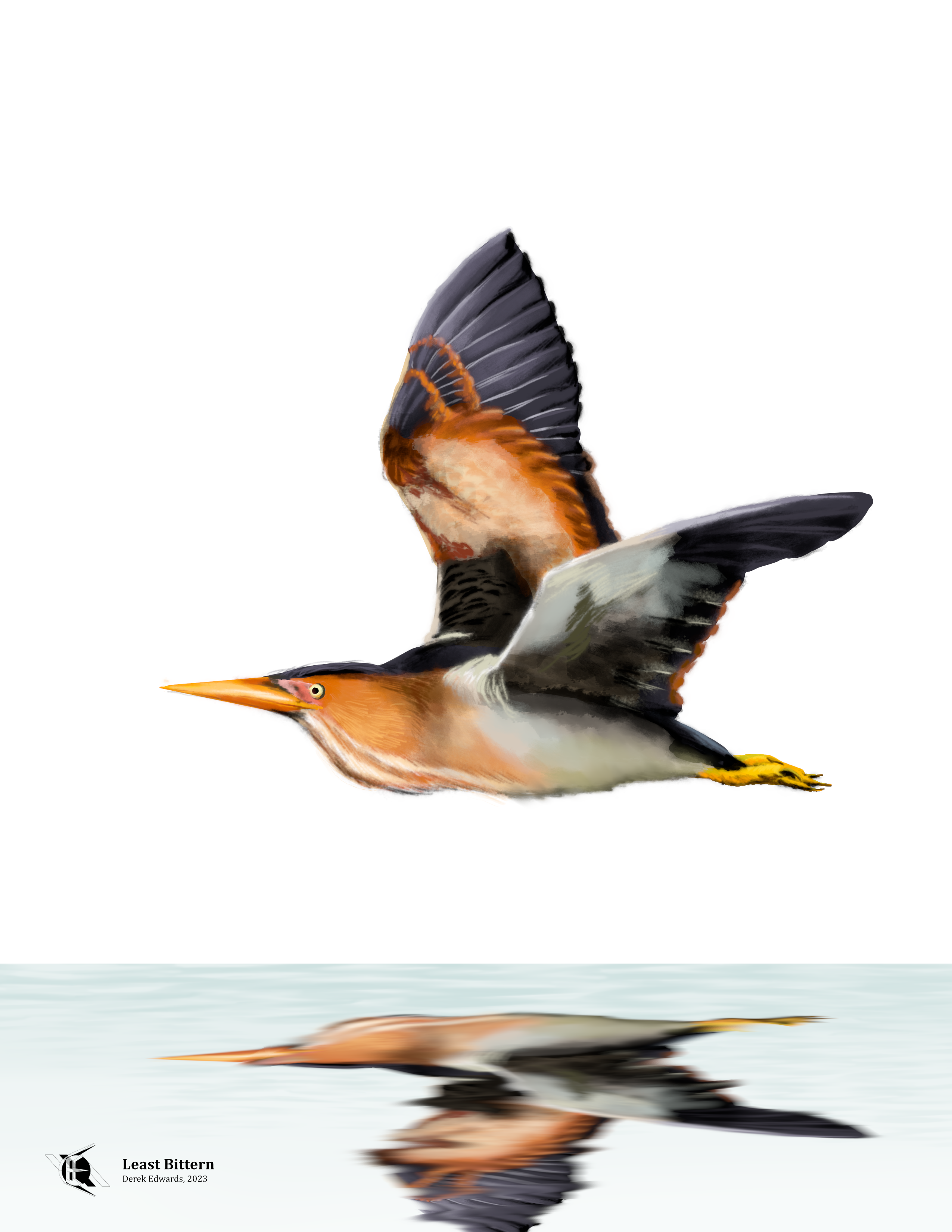
Running Commentary 9/18/2023
Hello,
I did not see a northern pintail this past weekend, but I did see several other birds. Here's a young male wood duck that I was able to get quite close to by laying down on a boardwalk where he couldn't really see me:
(Those gunshots you hear are from a nearby range; nobody's shooting at this duck.)
I saw a few other birds, which I listed on eBird.
Anyway...
Watching...
Ahsoka
- So we didn't follow Sabine and the Eye of Sion at all in this episode. I suppose they're trying to build anticipation for Thrawn for as long as possible.
- The sequence with Anakin and Ahsoka was great. I am still a little confused what exactly happened there. I'm not sure if that was genuinely the World Between Worlds or if Ahsoka just imagined herself there the way she imagined being back on Ryloth and Mandalore. I'm fine with Force visions being a little weird and mysterious. Honestly, I'd prefer that it wasn't really the World Between Worlds. That made for a really cool finale for Rebels, but I took the destruction of the Lothal temple to be an act of shutting the door on time travel in Star Wars, both in-universe and as a story possibility. I don't think time travel or divergent timelines are a good fit for Star Wars generally, so I'd prefer that door stay closed.
- I don't think there's anyone better at performing a lightsaber duel than Hayden Christensen. That was always his strength in the Prequels. As much as people will gripe about the pettiest things Disney does differently than George Lucas, I've never seen anyone complain that they haven't brought Nick Gillard back as stunt choreographer, which I think has been a genuine detriment to the franchise. Christensen, at least, seems to remember a lot of moves.
- A lot has been said regarding Christensen's acting being better here than in Attack of the Clones. Yeah, the script's better, and yeah, he's 20 years older and a more experienced actor, but the main improvement I see is that he's no longer trying to imitate James Earl Jones's vocal cadence. When Matt Lanter voiced Anakin in The Clone Wars, he was directed not to do that, and it seems Christensen has picked up the same hint.
- The best bit of acting in the episode, though, was Paul Sun-Hyung Lee's little sigh when he's told that his mission intel is the intuition of a boy whose father was a Jedi. It showed both that Teva found the situation ridiculous and that he trusted Jacen enough to act on his counsel, all at once. That has to be a familiar feeling to the friends of the Jedi.
- I wondered why no one thought to just tag along with the purgills to find Thrawn, although here Ahsoka raises a good point: animals don't always migrate strictly to the same spot or even take a direct route there. (I'm pretty sure the one she and Huyang thumbed a ride with will be pretty direct, though, considering that there's only three episodes left.)
- Getting back to the scene with Anakin: it was another great way that this series has explored what it means to be a Jedi. Anakin (who I do think was the spirit of Anakin Skywalker, not just another figment of Ahsoka's imagination) says he appeared to complete Ahsoka's training. Traditionally, a padawan's training was completed through the Jedi Trials. These Trials had no set form, but one key aspect was typically to have the padawan confront and overcome inner darkness in some way. Anakin never really faced that; he and the other padawan survivors of the First Battle of Geonosis had formal Trials waived and were knighted basically automatically upon their return to the Temple. Anakin probably now recognizes that this was a mistake borne out of desperation and that his training as a Jedi was never truly complete. So he comes back to put Ahsoka through her Trials.

Bird of the Week
This week we have another heron. We have one of the smallest herons, in fact: the Least Bittern. Like "egret", "bittern" is a name for a certain sort of heron, though bitterns are a bit more taxonomically defined; they are grouped in two genera: Botaurus, which contains the main continental bitterns, and Ixobrychus, which contains all the others. The least bittern is one of the three smallest of all herons, though whether it or one of the other two (the dwarf bittern and the black-backed bittern) is truly the smallest is a matter of some debate, though clearly whoever called it the "least" bittern believed this was the smallest. In any case, it is very small, only a little more than a foot long at the most; and that's with its neck outstretched1; often it will appear smaller, about the size of an American robin.
Bitterns are generally more reclusive than some other, better-known herons. They are typically found in reed-beds, hidden by rushes. They are, moreso than other herons, known for the sounds they make. Larger bitterns are known for "booming", making a very un-bird-like deep moaning or gulping sound. How they make such deep resonant sounds is still a matter of study. It seems that they are able to seal off their beaks and inflate their esophagus to serve as a resonant chamber amplifying ordinarily quiet glottal sounds.2 In any event, least bitters seem too small to properly boom; instead, they deliver a sort of barking sound.
Herons eat fish, so it should come as no surprise that this small heron eats small fish. It is too short to wade in any but very shallow ponds, but it can feed in deeper water by clinging to reeds. If they find a good fishing spot, they'll form a platform over the water from bent vegetation.3 They also nest in reed-beds, generally constructing their nests upon a similar platform, somewhere between 6 and 24 inches above the water.4 Many least bitterns spend the summer months in the eastern United States, along with pockets of the Great Plains and California. Other, non-migratory populations are found in parts of Latin America, where they are joined by their migratory kin during the winter.
To science, the least bittern is Ixobrychus exilis. The specific name means"small" or "slender" in Latin; literally, "ex ilis" means "without intestines". The generic name means "reed-bellower" in Greek.5
I would be remiss to write about the least bittern without writing about Cory's bittern. Charles Cory was the heir to a Boston luxury goods importer who lived his independently wealthy life pursuing the Big Three casually outdoorsy passions of late-19th and early-20th Century America: golf, baseball, and birds. He amassed a huge collection of bird specimens, over 19,000, and was a founding member of the American Ornithologists' Union, later serving as its president for two years. When Chicago's Field Museum of Natural History was established in 1893, Cory provided his collection as the foundation of the Museum's ornithological department, of which he was made honorary curator.6 (I have been to the Field Museum twice and have spent at least four hours across those two visits in their Hall of Birds.) In 1886 he described a small heron found in the Okechobee region of Florida, which he named Ardetta neoxena, the "new, strange little heron", which he described as "without doubt perfectly distinct from any known species".7 It was, however, only distinct from the least bittern in its coloring, and as more specimens popped up from all around the least bittern's range, it was determined that Cory's bittern was only a rare color morph of the least bittern.8,9
- O’Connor, Anthony “Least Bittern – a New Species for Ireland.” BirdGuides. Last modified October 9, 2019. https://www.birdguides.com/articles/rare-birds/least-bittern-a-new-species-for-ireland/
- Chapin, James Paul. “The Function of the Oesophagus in the Bittern’s Booming.” The Auk 39, no. 2 (March 31, 1922): 196–202. https://doi.org/10.2307/4073951.
- Monfils, M.J. "Special animal abstract for Ixobrychus exilis (least bittern)". Michigan Natural Features Inventory, (2003) Lansing, MI
- Weller, M.W. "Breeding Biology of the Least Bittern", The Wilson Bulletin 73, no. 1 (March 1961): 11-35. https://sora.unm.edu/node/127856
- Jobling, J. A. (editor). The Key to Scientific Names in Birds of the World (S. M. Billerman et al. editors), Cornell Laboratory of Ornithology
- Osgood, Wilfred Hudson. “In Memoriam: Charles Barney Cory. Born January 31, 1857-Died July 31, 1921.” The Auk 39, no. 2 (March 31, 1922): 151–166. https://doi.org/10.2307/4073946. Accessed at https://sora.unm.edu/node/12523
- Cory, Charles B. "Description of a New North American Species of Ardetta." The Auk 3, no. 2 (April 1986): 262. https://sora.unm.edu/node/4512
- Chapman, Frank M. "The Standing of Ardetta Neoxena." The Auk 13, no. 1 (January 1896): 11-19. https://sora.unm.edu/node/6226
- “Eighteenth Supplement to the American Ornithologists’ Union Check-List of North American Birds.” The Auk 40, no. 3 (June 30, 1923): 513–525. https://doi.org/10.2307/4074557.
Curation Links
What Happened to Montreal’s Legendary Melon? | Joe Balsam, Atlas Obscura
"A century ago, Manhattan residents with a hankering for dessert might flick on their finest frock coat, get a table at a white-tablecloth restaurant, and order a juicy slice of Montreal melon. It didn’t come cheap, though. A slice of the green-fleshed melon sold for a steak’s price of $1, or around $30 in today’s currency."
Forming an Edge | TW Lim, Scope of Work
A look at the work of making, and continually remaking, kitchen knives. Read it because it's interesting, and because it inspires you to go take care of your own knives.
The 2023 Ig Nobel Prize Winners | The Institute of Improbably Research
Those in the know are already laughing, then thinking, about these, but if you weren't aware, the 2023 Ig Nobels were awarded this past Thursday, honoring the wackiest in scientific research.
Buddy Bot | Joey Jordan, DUST
[FICTION] [VIDEO] "When a troublemaking teen reprograms the supervising robot his single mother has left him with, he ends up in her shoes when the once innocent companion begins to disobey him." (15:12)
See the full archive of curations on Notion






Member Commentary